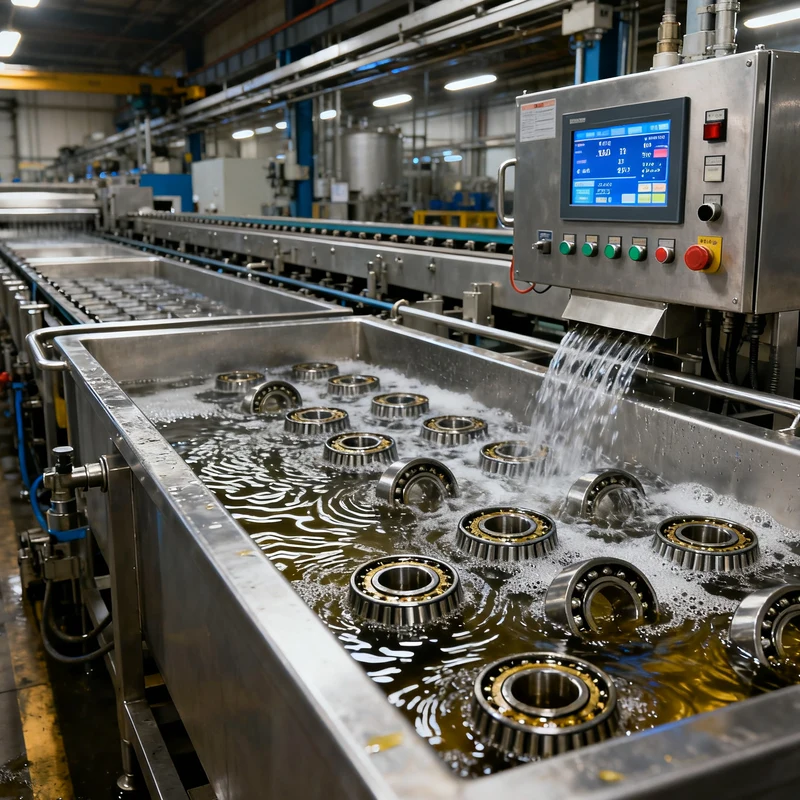- Benchtop Ultrasonic Cleaner
- Industrial Single Tank Ultrasonic Cleaner
- Ultrasonic Cleaner With Filtration
- Ultrasonic Cleaner With Lift
- Multi Tanks Ultrasonic Cleaner
- Immersible Ultrasonic Transducer
- Engine Ultrasonic Cleaner
- Heated Soak Tank
- Window Blinds Ultrasonic Cleaner
- Ultrasonic Welding Machine
- Ultrasonic Transducer
Technological Iteration and Upgrading, Solving Precision Cleaning Problems

As the manufacturing industry moves towards precision and refinement, the requirements for component cleaning are becoming more and more stringent. Traditional cleaning methods are often difficult to meet the needs of high-precision, high-uniformity and low-damage cleaning, which has become a bottleneck restricting the development of related industries. In response to this challenge, ultrasonic cleaning technology has continuously carried out technological iteration and upgrading in recent years, and has made important breakthroughs in solving precision cleaning problems, providing strong technical support for the development of high-end manufacturing.
One of the key directions of technological upgrading is the optimization of frequency control technology. In the past, fixed-frequency ultrasonic cleaning equipment was prone to problems such as uneven energy distribution in the cleaning tank, resulting in cleaning blind areas and affecting cleaning quality. Through technological innovation, the frequency adjustment function of ultrasonic cleaning equipment has been continuously improved. The newly developed frequency scanning technology can dynamically adjust the output frequency within a certain range, effectively avoiding the formation of standing waves in the cleaning tank, making the sound energy evenly distributed in the entire cleaning area. This improvement enables the equipment to achieve uniform cleaning of components with complex structures and irregular shapes, completely solving the problem of uneven cleaning.
The improvement of transducer performance is also an important part of technological upgrading. The transducer is the core component of ultrasonic cleaning equipment, and its performance directly affects the cleaning effect. Through the research and development of new materials and structural optimization, the energy conversion efficiency of the transducer has been significantly improved, and the stability of sound wave output has been enhanced. At the same time, the application of new materials such as corrosion-resistant coatings has extended the service life of the transducer, reducing the maintenance cost of the equipment. These improvements make ultrasonic cleaning equipment more adaptable to harsh working conditions and can maintain stable cleaning performance for a long time.
In order to solve the problem of damage to fragile and sensitive components during cleaning, the industry has developed a variety of gentle cleaning technologies. By adjusting the parameters such as sound wave intensity and cleaning time, and matching with appropriate cleaning fluids, the equipment can achieve effective cleaning while minimizing the impact on components. This technology is particularly important in the cleaning of precision electronic components, optical lenses and other items. It can thoroughly remove contaminants without scratching the surface of components or damaging their internal structures, ensuring the integrity and performance of the components.
The integration of multiple processes is also a new trend in the upgrading of ultrasonic cleaning technology. In the face of complex cleaning requirements, a single ultrasonic cleaning process is often difficult to meet the standards. By combining ultrasonic cleaning with processes such as rinsing, drying and degreasing, an integrated cleaning line has been formed, which can complete multiple cleaning steps in one stop. This not only improves cleaning efficiency, but also ensures the consistency of cleaning quality, solving the problem of secondary pollution caused by multiple transfers of components.
Industry experts said that the continuous iteration and upgrading of ultrasonic cleaning technology is the key to its ability to adapt to the development of high-end manufacturing. In the future, with the continuous emergence of new precision components and new materials, ultrasonic cleaning technology will face more challenges, but it will also promote the industry to carry out more in-depth technological research, and continue to make new breakthroughs in solving precision cleaning problems.